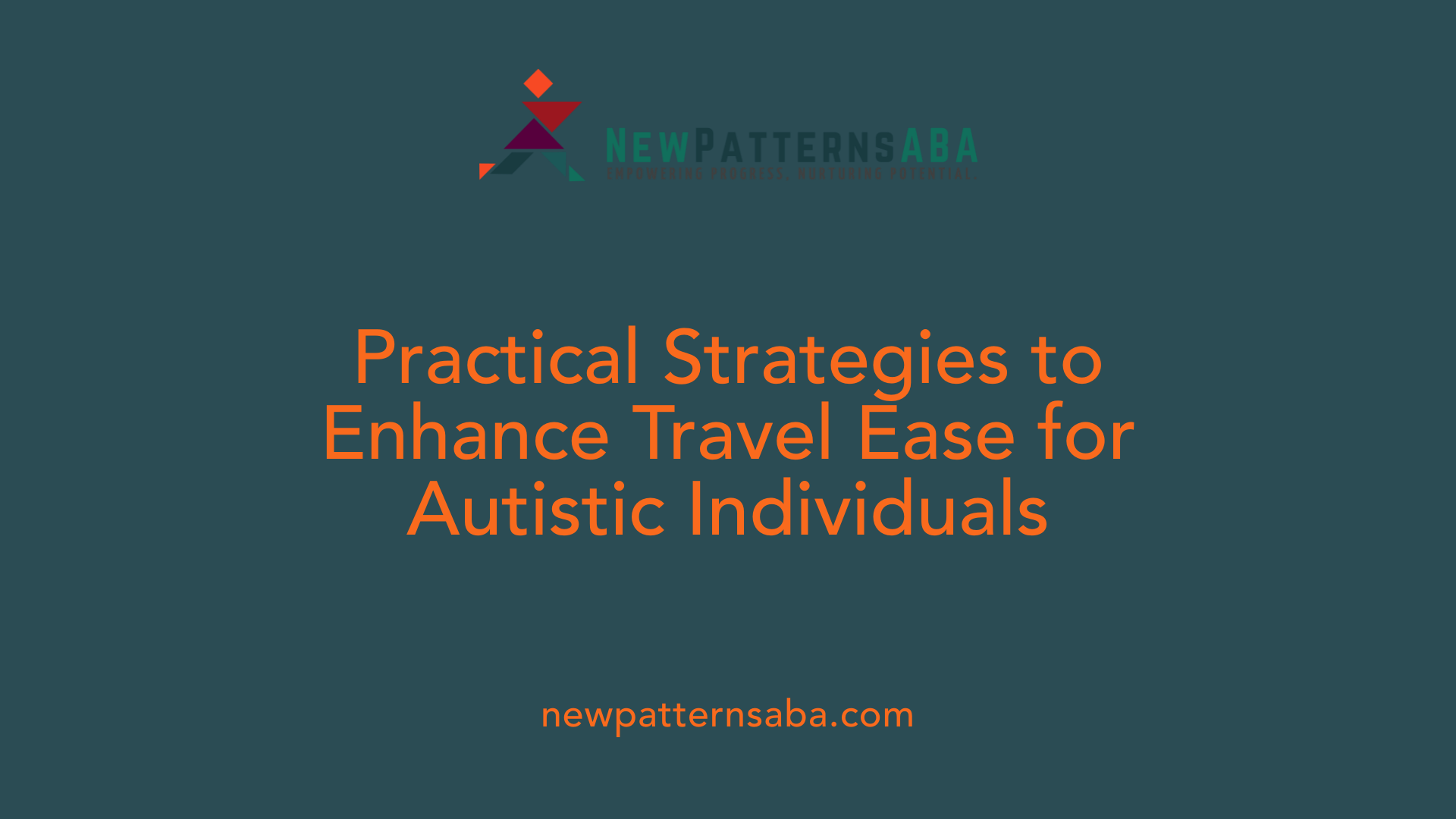Navigating Public Transport with Confidence
For many autistic individuals, public transportation can present a unique set of challenges—from sensory sensitivities to anxiety over unpredictable events. However, with specialized behavioral strategies and supportive tools, these barriers can be significantly reduced, fostering independence and access to the community. This article explores effective methods and therapies, including behavioral analysis therapy, that are used to teach and support autistic individuals in confidently using public transportation systems.
Understanding Behavioral Analysis Therapy in Autism Support

What is behavioral analysis therapy for autism?
Behavioral analysis therapy for autism, known as Applied Behavior Analysis (ABA), is a well-researched approach that helps individuals with autism develop crucial skills. It uses learning and behavior principles to promote positive actions, like better communication and social interaction, while reducing challenging behaviors. ABA employs techniques such as positive reinforcement and detailed behavior assessments. Programs are customized by trained professionals to fit each person's needs, using methods like Discrete Trial Training (DTT) and the Early Start Denver Model (ESDM). This therapy analyzes behaviors through the Antecedent-Behavior-Consequence (ABC) model to set clear developmental goals. Intensive early intervention has shown great success in improving skills and outcomes.
Who are the professionals involved in providing behavioral analysis therapy?
A team of experts usually delivers ABA therapy. Board Certified Behavior Analysts (BCBAs) design and monitor personalized treatment plans based on thorough assessments. Licensed therapists and psychologists may work alongside BCBAs to provide therapy and apply interventions. Behavioral technicians, trained under BCBAs, support the therapy by carrying out specific exercises and strategies. Additionally, caregivers and families receive training so they can reinforce what is learned during sessions, ensuring consistency and progress at home.
How companies specializing in autism behavioral therapies contribute
Companies focused on autism behavioral therapies play a vital role by delivering tailored interventions that address individual challenges and strengths. They provide thorough assessments and craft personalized ABA programs. These companies offer various evidence-based therapies beyond ABA, such as social skills training and communication support. They also train caregivers to maintain gains in daily life and provide continuous monitoring to adapt therapy for maximum benefit. This comprehensive approach helps individuals with autism achieve greater independence and a higher quality of life.
Key benefits of behavioral analysis therapy
ABA therapy offers many benefits, including marked improvements in communication, social abilities, and daily living skills. It is data-driven and personalized, increasing helpful behaviors while decreasing problematic ones. Suitable for all ages, ABA enhances independence in everyday tasks like dressing and community participation. Early and consistent ABA intervention can lead to better intellectual functioning and language development. Overall, ABA supports autistic individuals in gaining autonomy and improving social integration, enabling fuller participation in community life.
Sensory Challenges in Public Transportation for Autistic Individuals

What are common sensory sensitivities in public transport for autistic individuals?
Autistic individuals often experience heightened sensitivities to sensory stimuli when using public transportation. Common challenges include being overwhelmed by loud sounds, bright or flickering lights, strong smells, and the general hustle and bustle of crowded buses or trains. Sensory triggers like these can cause discomfort and anxiety, making it difficult to navigate travel environments.
How does sensory overload impact people with autism in public transportation?
Sensory overload can lead to increased stress and anxiety, impairing an individual's ability to focus on their journey. This might result in avoidance of public transport altogether or difficulty coping with unexpected events like delays or seat unavailability. Overload can affect their spatial awareness and executive functioning, crucial for safe and timely travel.
What strategies can help reduce sensory stress during travel?
Several practical approaches can help manage sensory challenges and improve comfort:
- Visual aids: Using step-by-step pictures and written cues teaches travel sequences and helps manage unpredictability, reducing stress.
- Noise-canceling headphones or soothing music: These tools block out overwhelming background noise, providing auditory relief.
- Carrying familiar objects: Items with pleasant smells or textures, such as favorite toys or fabrics, offer calming sensory support.
- Travel planning: Scheduling trips during quieter times and selecting seats strategically minimize sensory stimulation.
- Using real-time tracking apps and identifying quiet areas or priority seating enhance predictability and reduce anxiety.
By combining these strategies, autistic individuals can experience a more manageable and comfortable public transportation journey, promoting greater independence and confidence.
Effective Strategies and Tools to Support Autistic Individuals Using Public Transport

How Do Visual Aids Help in Step-by-Step Guidance?
Visual aids, such as words and pictures, are valuable tools for teaching autistic individuals the process of using public transport. They break down complex journeys into manageable steps, making it easier to understand and remember. These aids also serve as calming reminders of the coping strategies they can use during their travels.
What Strategies Help Manage Unexpected Events During Transit?
Unpredictable changes like delays or unavailable seats can cause anxiety. Visual aids with scripts or sign-based instructions provide clear guidance on how to handle these situations. Planning alternative routes and reading timetables ahead of time are also practical ways to reduce stress.
How Can Noise-Canceling Headphones and Soothing Music Assist?
Noise-canceling headphones or playing relaxing music can help reduce the overload of background sounds, common in public transport. This sensory management strategy lowers anxiety and helps maintain focus during the journey.
Why is Carrying Familiar Objects Beneficial?
Bringing along a favorite toy, fabric, or any item with a pleasant smell or feel offers sensory comfort. These familiar objects help regulate sensory input, providing calm and reassurance amidst the often overwhelming public transport environment.
What Are the Best Practices for Planning Travel Time and Seat Selection?
Choosing to travel during less busy times can minimize sensory overload and social stress. Selecting strategic seats, such as those near exits, quiet areas, or priority seating, helps create a more predictable and comfortable experience.
How Does Technology Support Travel Independence?
Real-time tracking apps allow users to monitor bus or train arrival times and any disruptions, facilitating better planning. Additional tools like navigation apps and communication aids empower autistic travelers to navigate unfamiliar routes confidently.
These strategies combine to reduce stress and promote independence, enabling autistic individuals to use public transportation more comfortably and effectively.
Alternative Transportation Options and Their Role in Autism Support

Paratransit Services as Accessible Options
Paratransit services provide a valuable transportation alternative for autistic individuals who may face challenges with conventional public transit. These services often offer door-to-door rides tailored to those with disabilities, ensuring greater comfort and less sensory overload. They can be booked in advance, reducing anxiety related to unpredictable travel schedules.
Ride-Sharing Customization for Sensory Needs
Ride-sharing platforms offer flexible travel that can be customized to suit sensory sensitivities common in autism. Users can set preferences such as quiet rides or specific vehicle types through app settings. Scheduling trips during off-peak hours also helps minimize exposure to crowded and noisy environments, offering a more pleasant travel experience.
Driving Training Considerations for Autistic Adults
Driving can significantly boost independence, but autistic adults often require specialized training programs that address sensory sensitivities and stress management. Gradual exposure to driving situations combined with strategies for handling sensory input can help ease the transition. Training often focuses on coping with unexpected events and building confidence behind the wheel.
Walking and Cycling as Viable Alternatives
For shorter journeys, walking and cycling are practical and healthy transportation options. Planning safe routes that avoid heavy traffic, ensuring appropriate weather gear, and developing safety skills are essential. These methods allow autistic individuals to travel independently with less sensory stimulation than motorized transport.
| Option | Benefits | Considerations |
|---|---|---|
| Paratransit | Door-to-door service, less sensory overload | Requires advance booking |
| Ride-Sharing | Customizable preferences, off-peak travel times | Dependent on driver availability |
| Driving Training | Increases independence, tailored support | Needs specialized programs and gradual skill-building |
| Walking & Cycling | Health benefits, minimal sensory input | Route planning and safety preparedness |
The Importance of Independence and Social Inclusion Through Transportation Access
How Does Transportation Access Affect Independence for Autistic Individuals?
Transportation plays a crucial role in supporting the independence of individuals with autism. Challenges such as sensory sensitivities and executive functioning difficulties can make using public transport stressful, leading some to avoid it altogether. However, having reliable transportation access allows autistic adults to engage more fully in daily activities, from employment to educational opportunities.
How Can Reducing Anxiety Increase Community Participation?
Reducing stress related to travel helps enhance social participation. Strategies like using visual aids to explain transport steps, selecting quiet times to travel, and carrying comforting objects can significantly decrease anxiety. When autistic individuals feel more confident and less overwhelmed, they are more likely to explore their communities, meet friends, and attend events, fostering social inclusion.
What Role Do Specialized Training Programs and Initiatives Play?
Specialized training programs, such as gradual exposure to driving or public transport use, equip autistic adults with necessary skills while considering sensory challenges. Initiatives like Have a Go Days make travel more accessible by creating supportive environments tailored to diverse needs. Real-time apps and communication aids further empower users to manage their journeys independently, while paratransit services and ride-sharing options offer flexible alternatives.
Together, these approaches enable autistic individuals to overcome transportation barriers, promoting autonomy and stronger community connections.
Fostering Confident Travel and Community Engagement
Teaching public transportation use to autistic individuals is a multi-faceted process that requires a tailored approach grounded in behavioral therapy and practical strategies. Through specialized ABA interventions, sensory supports, and technology aids, autistic individuals can overcome common challenges and navigate public transit with greater ease and confidence. Alternative transportation modes and community initiatives further expand accessibility and opportunity. Ultimately, enabling reliable and comfortable transport strengthens independence, enhances social inclusion, and opens doors to fuller participation in society for individuals on the autism spectrum.
References
- Teaching Individuals with ASD to Take Public Transport
- What to Know About Transportation for Autistic Adults
- Autism-friendly tips for public transport use
- Applied Behavioral Analysis (ABA) - Los Angeles
- Applied Behavior Analysis (ABA)
- Applied Behavior Analysis (ABA)
- The Top 10 Reasons Children With Autism Deserve ABA
- Applied Behavior Analysis (ABA)





